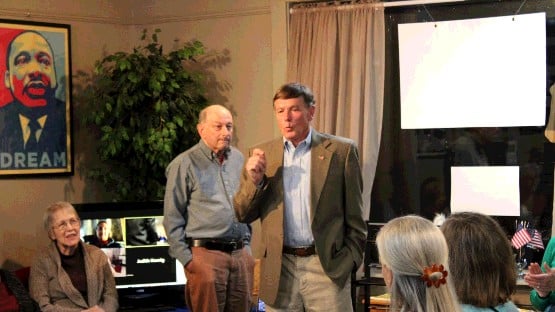The big news in Waynesboro this week is that the city and the Virginia Museum of Natural History have come up with the $50,000 needed to proceed with the development of a master plan for a proposed museum interpretive facility in Waynesboro. But what about the rest of the projected $7.4 million cost to build and open the interpretive center? Where will that money come from?
The question was asked at a press conference held in the city council chambers at the Charles T. Yancey Municipal Building to tout the master plan as the big next step in the project, but city officials deflected on answering, leaving Dr. Joe B. Keiper, the executive director of the Virginia Museum of Natural History, on the hook on that one.
Unsettling is that the answer from Keiper was a long way around the theme of, Um, I dunno.
“We will be working very closely with our local officials locally as well as federally to identify everything from educational foundations and other funding sources that could lend toward something like this, for economic development sources that find this kind of activity attractive,” Keiper said.
It’s not that we don’t have specific numbers related to the project. A 2013 feasibility study pegs the impact on the local economy at 108 short-term construction jobs, 10 full-time jobs created related to the operations of the museum facility, annual visitor spending at $1.8 million, creating an additional 20 indirect jobs, and local tax revenues of $23,698 a year.
But how much do we have to spend to be able to pull all that in? Logic dictates that a big chunk of the final tally will have to come from local coffers, as Keiper concedes.
“State budgets are tight, and we have an appropriation every year, and that’s tight, so we don’t want to take away from that, or from any of our colleagues in state government,” Keiper said, suggesting that there could be additional funding sources outside of city tax dollars available, possibly historic tax credits, if the decision is made to rehab an existing building to house the interpretive center.
Efforts would also be made to raise as much as a third of the money from philanthropic activities, Keiper said.
Pressed to come up with a ballpark on how much would have to come from city tax dollars, Keiper estimated about a third, which would translate to roughly $2.5 million based on the current project estimate.
For recent historical context on the challenge there, the Wayne Theatre Alliance has been working toward a roughly $7 million renovation of the downtown landmark since 2001, and is still struggling to dot the final I’s and cross the final t’s on its funding platform.
This might be why city officials deflected on the question relative to the natural history museum at today’s press event.
“Waynesboro is going to be an interesting community to work in, because it isn’t the biggest community in the world, and this is something that we have to make sure that we’re planning properly,” Keiper said. “We’re not in Harrisonburg or Richmond or Alexandria or something like that. But we did it in Martinsville, in a town that’s 40 percent smaller than Waynesboro, so there’s absolutely no reason we can’t do it here.”
– Column by Chris Graham










